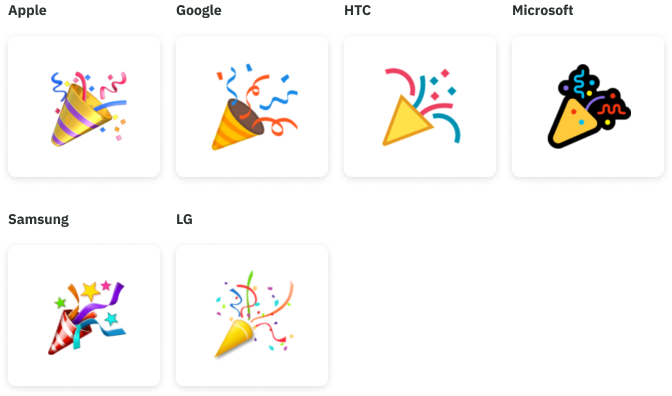Real content coming soon
Normal text paragraph here
Emoji 🎉
We use emoji to illustrate ideas, humanise our interactions and infuse our copy with character. They're symbols and symbols are good at communicating complex concepts in a simple way.
But using emoji in an inappropriate context can damage content. They can make our product seem flippant or childish, cause confusion – and even offence! – in translation. Here are a few rules for using emoji in product content.
But using emoji in an inappropriate context can damage content. They can make our product seem flippant or childish, cause confusion – and even offence! – in translation. Here are a few rules for using emoji in product content.
Rules of thumb
- One per screen, maximum
- End a statement with an emojii (in place of a full stop) – don't start with one
- Only use emoji in headings and push notifications, never in interactional elements like buttons
Accessibility
Some screen readers pick up emoji, others don't – always write for the worst-case scenario. Never rely on an emoji to communicate something that you don't also express in words.
Context
Use an emoji to make a positive interaction feel more human, for example:
That was fast 🙌
Your order arrived in 21 minutes. Enjoy!
Don't use an emoji when the context is neutral or negative, for example:
We’re sorry it was late
Finding a rider to collect your order took longer than usual.
Symbols
Emoji are glyphs. We use some emoji as signifiers for interactions or events. For example, 🚴 in a push notification communicates 'rider'. Once a customer's learned that, they only need to see the emoji – not read the words – to digest the message, saving them time and effort. This only works effectively if we use the same emoji consistently for the same events.
| Party popper 🎉 | Positive event · Before an order arrives |
| Rocket 🚀 | Speed |
| Raising hands 🙌 | Positive event · After an order arrives |
| Waving hand 👋 | Personal greeting |
| Party popper 🎉 | Positive event · Before an order arrives |
| Rocket 🚀 | Speed |
| Raising hands 🙌 | Positive event · After an order arrives |
| Waving hand 👋 | Personal greeting |
Internationalisation
Some emoji have culturally specific meanings and should always be avoided.
| Facial expressions 😬 😂 😋 😃 | Too much scope for ambiguity across cultures |
| Thumbs up 👍 | Negative meaning in the UAE and across the Middle East |
| Cutlery and plate 🍴 🍽️ | Western bias |
How emoji look across devices
Before choosing an emoji, research how the unicode character renders on different platforms, OS and devices. For example, here's how the party popper emoji could look to our users:

Punctuation
Regular text
- This is a bullet list
- This is a bullet list
- This is a bullet list
- This is a bullet list
- This is a bullet list
Subsection example
Regular text
Lists
Regular text
- This is a bullet list
- This is a bullet list
- This is a bullet list
- This is a bullet list
- This is a bullet list
Subsection example
Regular text
Time and date
Regular text
- This is a bullet list
- This is a bullet list
- This is a bullet list
- This is a bullet list
- This is a bullet list
Subsection example
Regular text
Distance
Regular text
- This is a bullet list
- This is a bullet list
- This is a bullet list
- This is a bullet list
- This is a bullet list
Subsection example
Regular text
Weight
Regular text
- This is a bullet list
- This is a bullet list
- This is a bullet list
- This is a bullet list
- This is a bullet list
Subsection example
Regular text
Money
Regular text
- This is a bullet list
- This is a bullet list
- This is a bullet list
- This is a bullet list
- This is a bullet list
Subsection example
Regular text